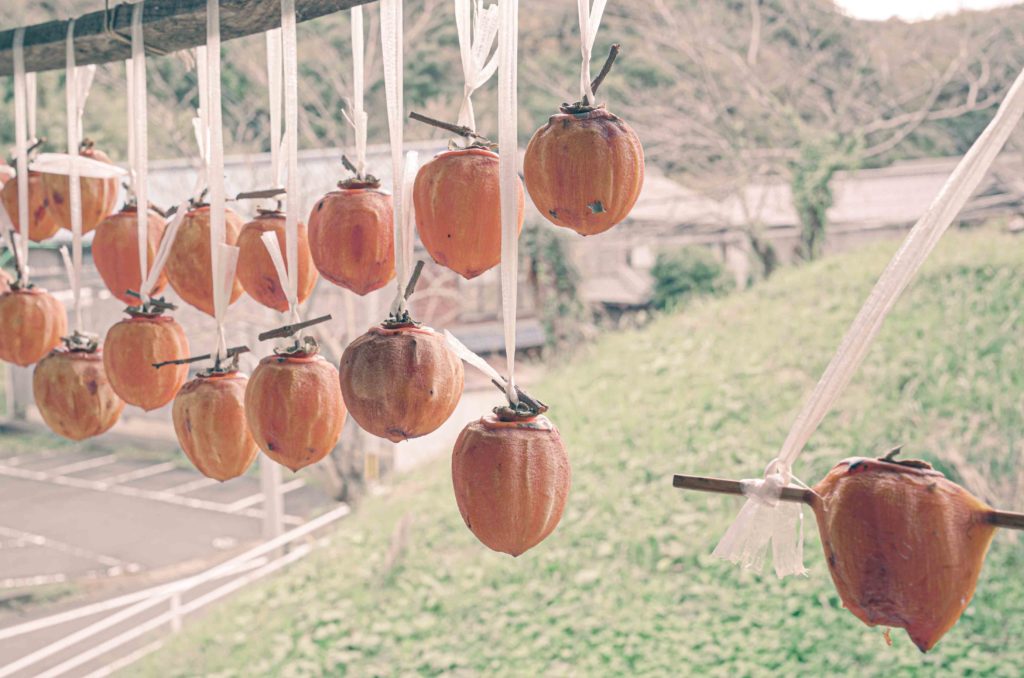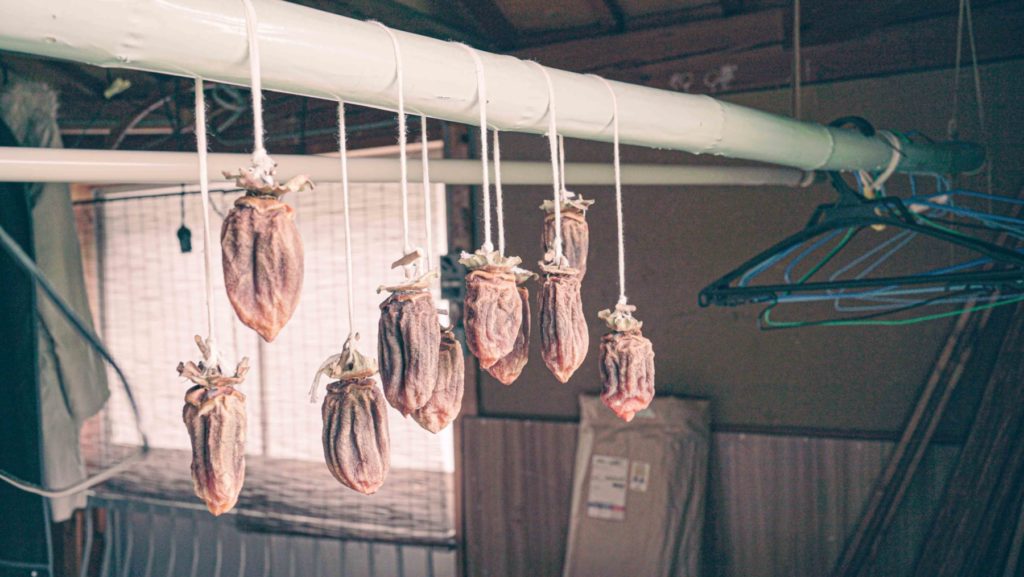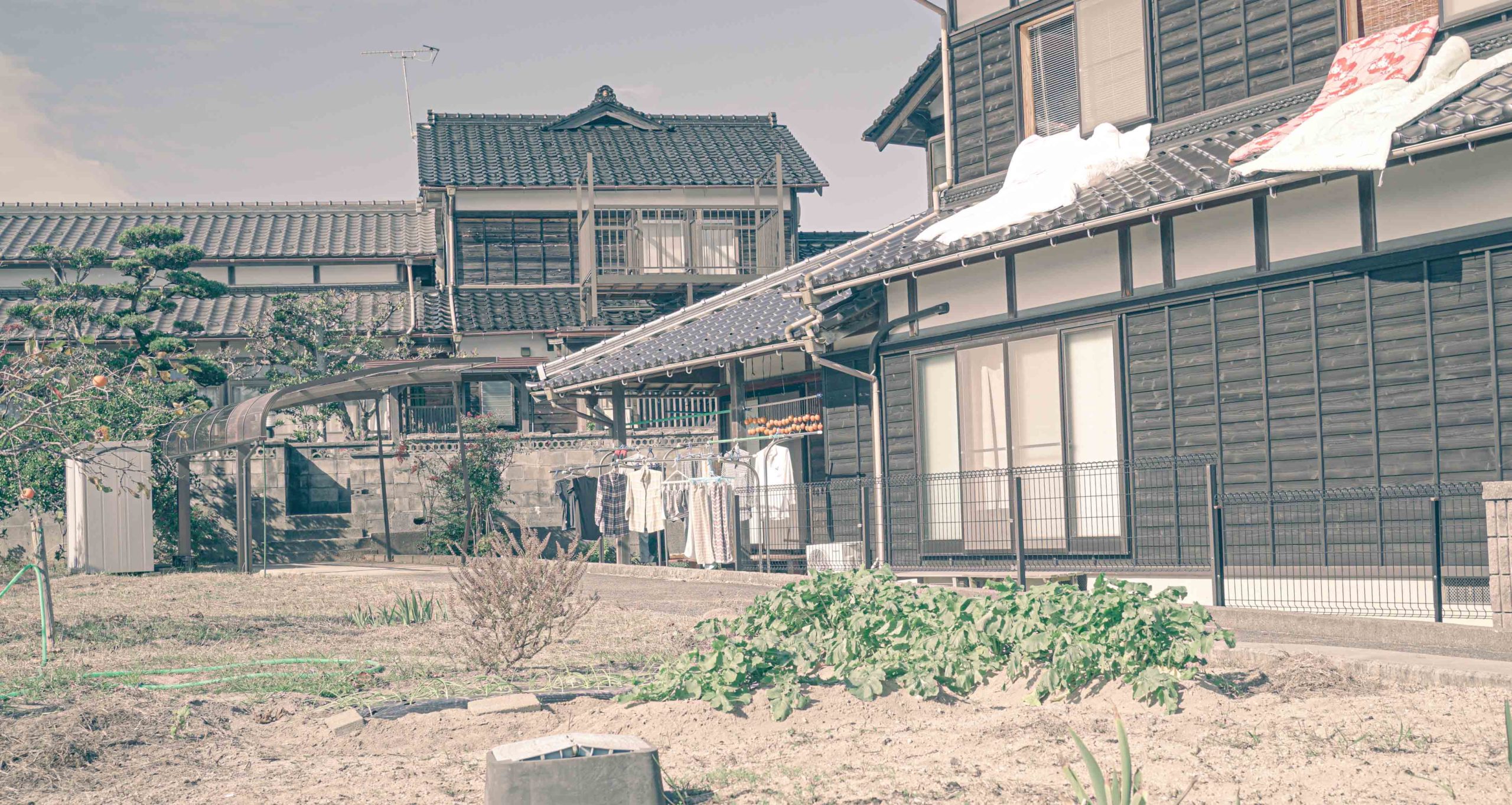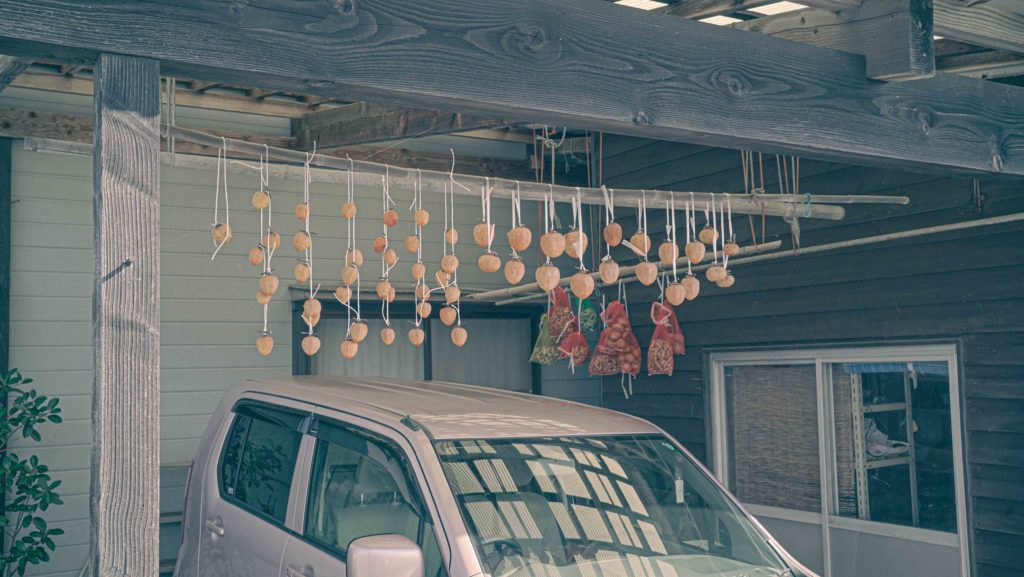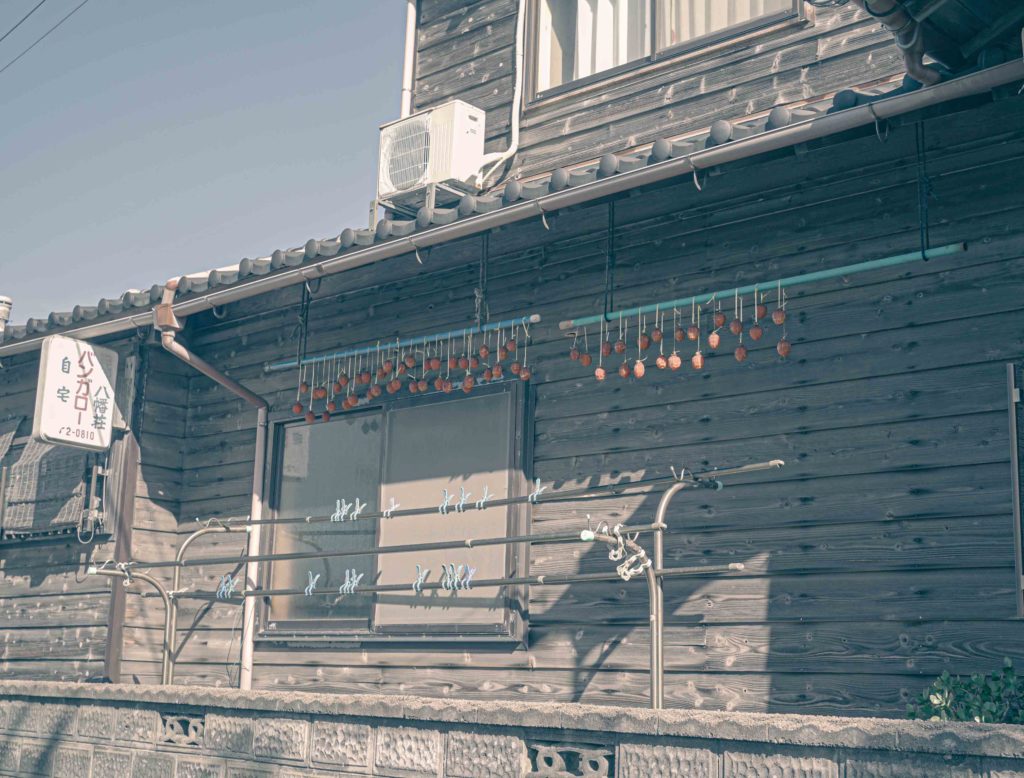Around the house of my grandmother are two Kaki trees. One has small sweet kaki, and one has long astringent Kaki, that we can only eat if they are super soft and of jam consistency inside. Unripe they contain little water and are thus are very good to be dried*. It is very common to dry Kaki in autumn at home, to eat them around new years. Once dried, called Hoshigaki, they are a delicious as well as beautiful treat and so satisfying to eat.
There are so many abandoned Persimmons trees on the countryside, that seem to collapse from their fruits. If the trees are close to the forest, monkeys and big birds will appear attracted by the attractive orange fruits if they are not taken beforehand.
There are many delicious ways we want to eat the sweet Kaki (as we got so many). On NHK, we watch a programm that broadcasts local Kaki farmers and their Kaki recipes. Kaki Cheese Gratin (baked in Kaki Skin), Kaki Tempura, Italian style Kaki Mozarella Salad on Toast (it is really delicious!), Grilled glazed Kaki, Kaki Mochi and more.
From October to November, Kaki are really all over and can not be missed.
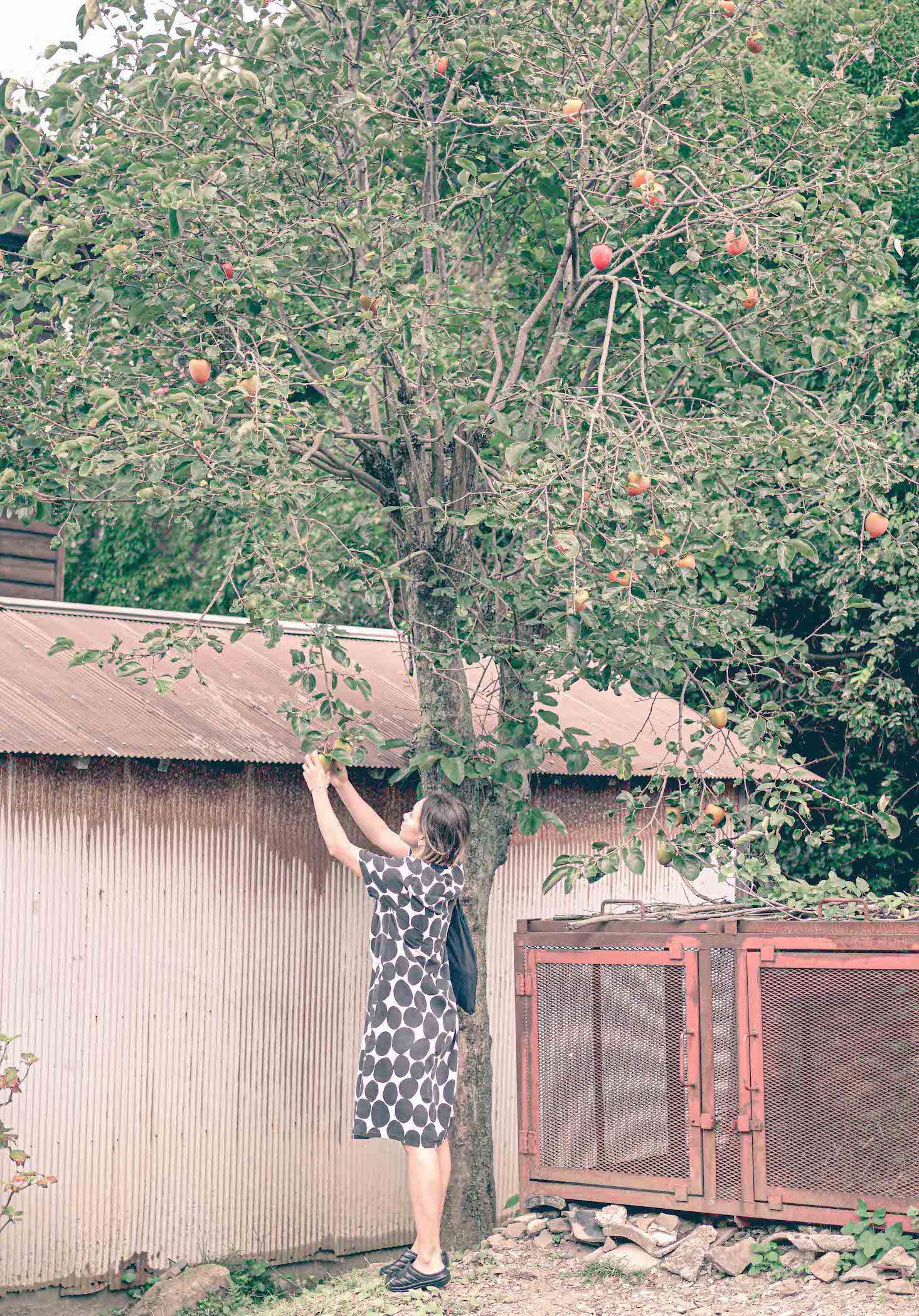
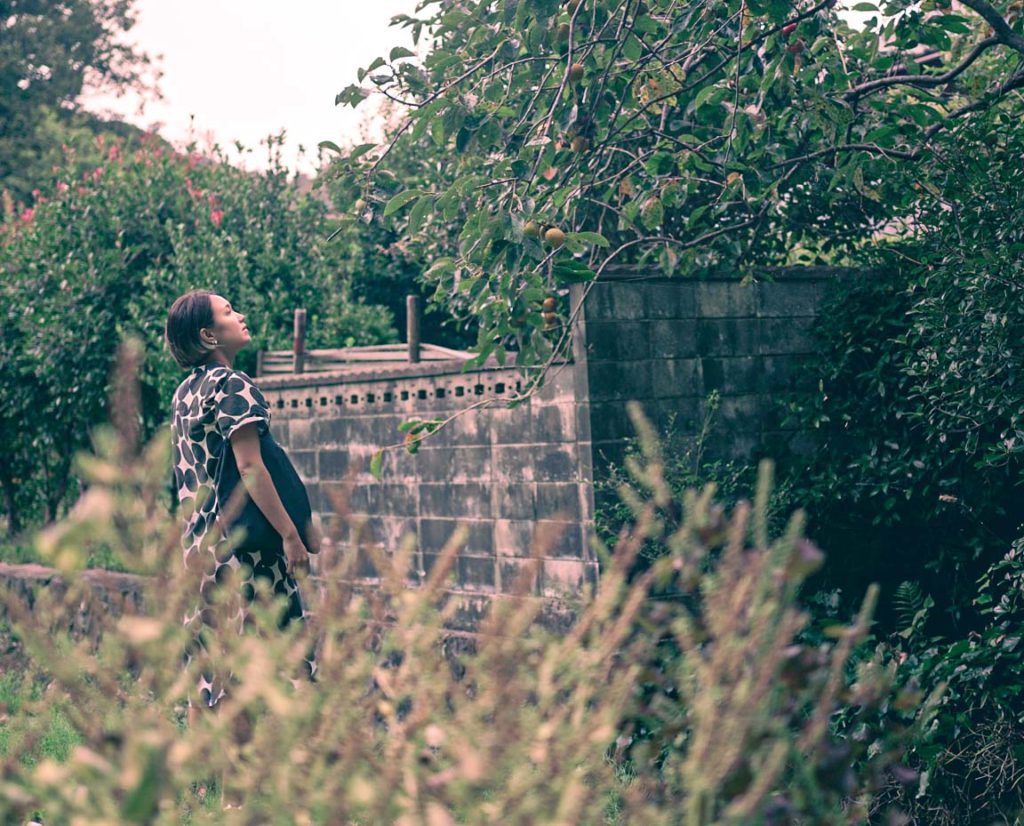
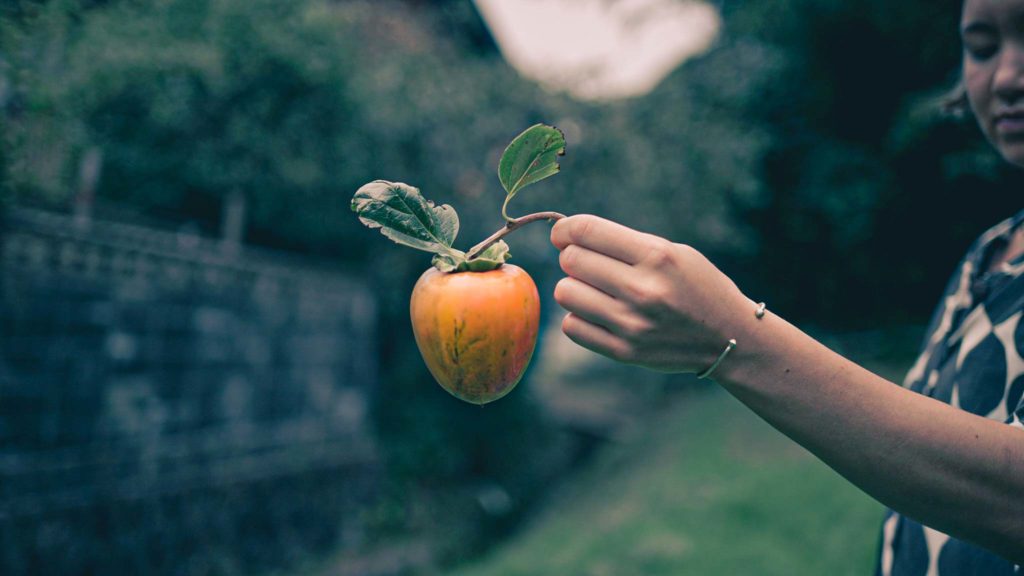
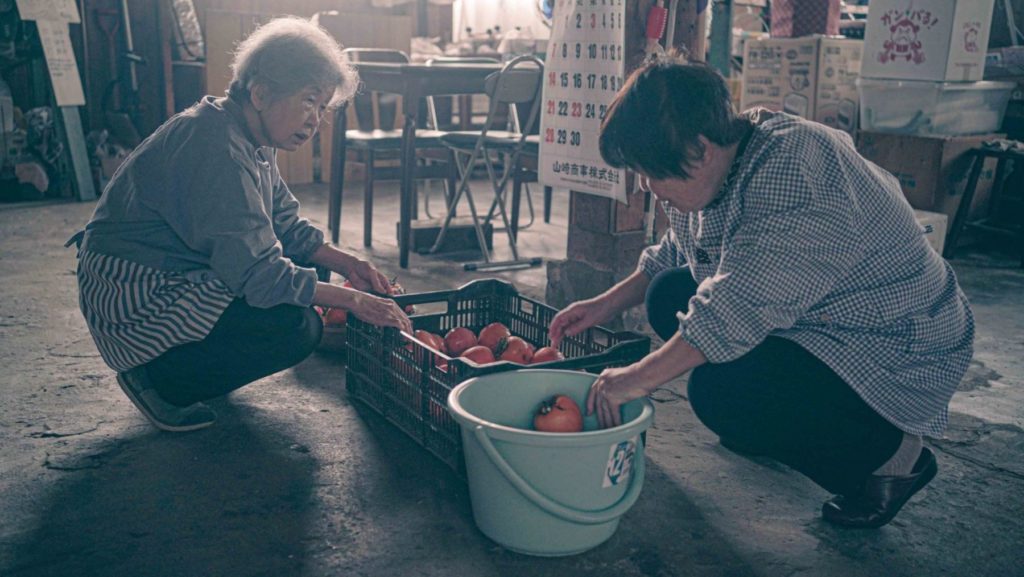
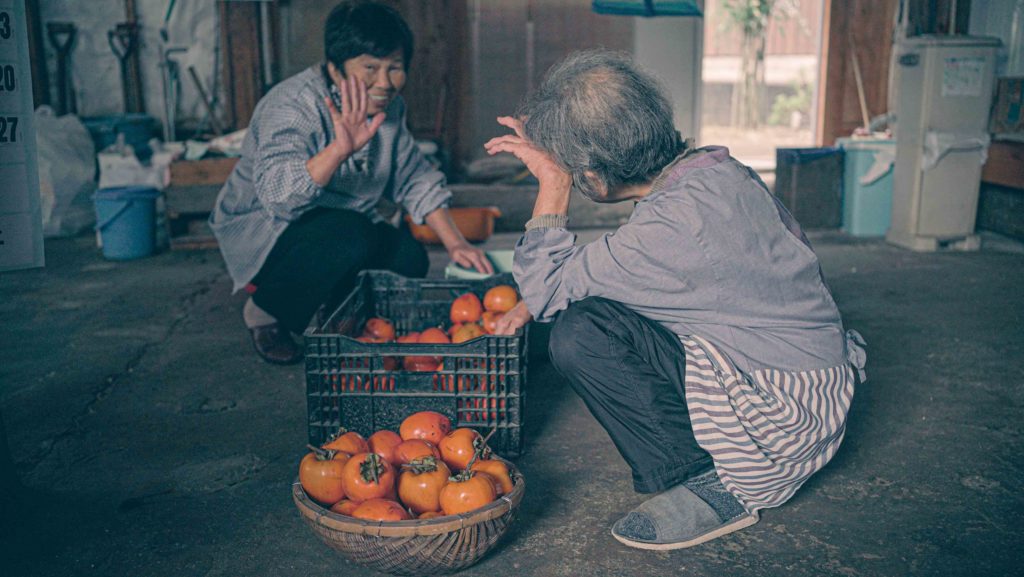
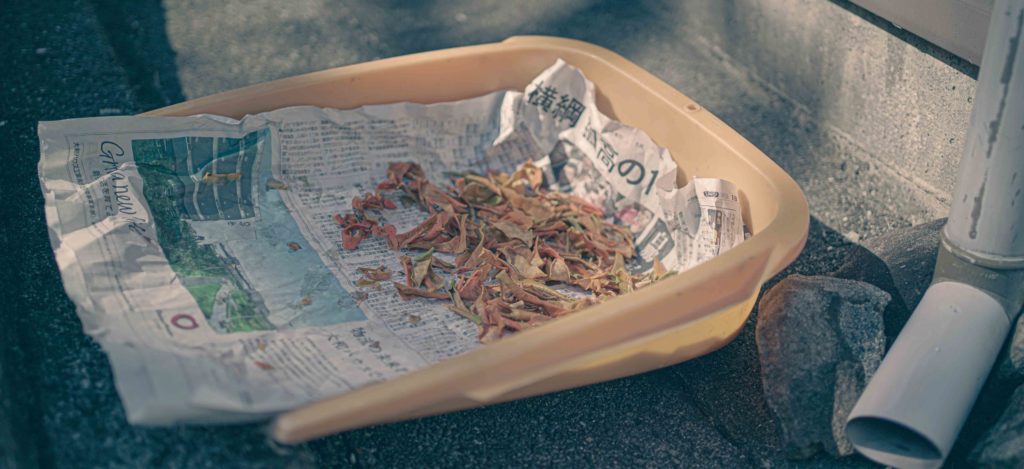
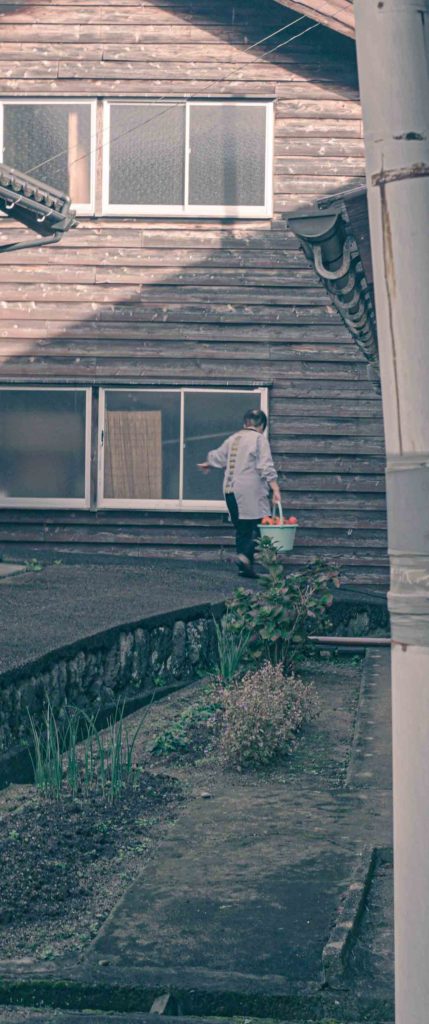
To make dried Kaki, from Shibu Gaki, our grandmother peels them and hangs two of them on one thread. On a spot with a lot of wind and preferably sun. Apparently, having good airflow is the important point to drying the Kaki. On sunny days, there are many Kakis on housesides in the neighborhood.
The skin of Kaki can be used to coloring of materials.
